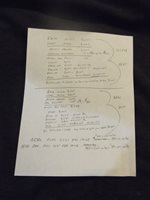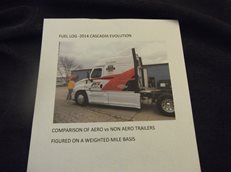How I Figure It
Deep down I am a numbers guy. So, let me apologize, if you find this boring. My degree is in accounting. There are three basic types of accounting. Tax accounting drives me nuts. It is completely illogical. It is based on what a bunch of legislators who rely on donations have codified over the years. Financial accounting is a little better. At least it follows some logic. Income statements and balance sheets serve a purpose. The logic is not that difficult to follow. Cost accounting is what I enjoy the most.
Financial accounting is a little better. At least it follows some logic. Income statements and balance sheets serve a purpose. The logic is not that difficult to follow. Cost accounting is what I enjoy the most.
Cost accounting provides accurate data to help us make impartial and informed decisions. If you slant the data you can come up with a rationalization for the decision you wanted before you started the study. We all remember the saying “Figures don’t lie, but liars figure”. That defies the purpose of cost or managerial accounting. I want to make the right decisions. Without accurate information, we can’t make the best decisions. As small business people the wrong decisions can cost us our businesses.
 The fuel log of my Cascadia is set up to look at a few different items. The first is my average MPG. Fuel is our number one cost and we need to know how much we are spending on it. It is more than just miles per gallon. It is cost per mile. That is not difficult. Take your total fuel costs and then divide them by the miles driven or miles paid, whatever you need. But, I want to measure my fuel mileage using a number that reflects the load weight. Bear with me here. I will use round numbers. Say I drove 1,000 total miles and used 100 gallons of fuel. I got 10 mpg. Now for 500 miles I had a 40,000 lb load. I had 25,000 lbs on for another 400 miles. Then I had 100 miles of deadhead. I will multiply 500 x 40,000. That equals 20,000,000. Then multiply 400 x 25,000. That equals 10,000,000. The deadhead loads add zero weight per mile, but need to be averaged in. Add 20,000,000 + 10,000,000 + 0. That equals 30,000,000. Divide the total weight by the mileage driven (1,000). You will come up with an average net load per mile of 30,000 lbs. You can use that information to figure your cost per mile on loads by weight. A 40,000 lb load costs more to haul that a 20,000 lb load. These numbers can tell you how much more.
The fuel log of my Cascadia is set up to look at a few different items. The first is my average MPG. Fuel is our number one cost and we need to know how much we are spending on it. It is more than just miles per gallon. It is cost per mile. That is not difficult. Take your total fuel costs and then divide them by the miles driven or miles paid, whatever you need. But, I want to measure my fuel mileage using a number that reflects the load weight. Bear with me here. I will use round numbers. Say I drove 1,000 total miles and used 100 gallons of fuel. I got 10 mpg. Now for 500 miles I had a 40,000 lb load. I had 25,000 lbs on for another 400 miles. Then I had 100 miles of deadhead. I will multiply 500 x 40,000. That equals 20,000,000. Then multiply 400 x 25,000. That equals 10,000,000. The deadhead loads add zero weight per mile, but need to be averaged in. Add 20,000,000 + 10,000,000 + 0. That equals 30,000,000. Divide the total weight by the mileage driven (1,000). You will come up with an average net load per mile of 30,000 lbs. You can use that information to figure your cost per mile on loads by weight. A 40,000 lb load costs more to haul that a 20,000 lb load. These numbers can tell you how much more.
I do have a side issue. The company that I am leased on with is dominated by company trucks. Some  of our trailers have skirts. Some don’t. Saving fuel benefits them too. Since skirts don’t cost me any money and save me fuel, of course I want them. They need to know how much fuel skirts save them as opposed to how much they cost. My research does not have a result in mind. It is meant to be dry (boring) numbers. The data is set up to see what fuel mileage difference there is between skirted and non skirted trailers. Then I can present the data to the company. They will act in their best interest. If the initial cost outlay to retrofit trailers justifies the savings I will have a better argument.
of our trailers have skirts. Some don’t. Saving fuel benefits them too. Since skirts don’t cost me any money and save me fuel, of course I want them. They need to know how much fuel skirts save them as opposed to how much they cost. My research does not have a result in mind. It is meant to be dry (boring) numbers. The data is set up to see what fuel mileage difference there is between skirted and non skirted trailers. Then I can present the data to the company. They will act in their best interest. If the initial cost outlay to retrofit trailers justifies the savings I will have a better argument.